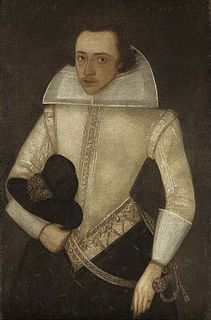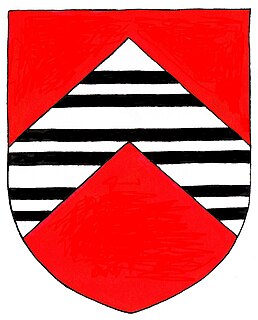Related Research Articles

The Babington Plot was a plan in 1586 to assassinate Queen Elizabeth I, a Protestant, and put Mary, Queen of Scots, her Roman Catholic cousin, on the English throne. It led to Mary's execution, a result of a letter sent by Mary in which she consented to the assassination of Elizabeth.

Elizabeth is a 1998 British biographical period drama film directed by Shekhar Kapur and written by Michael Hirst. It stars Cate Blanchett in the title role of Elizabeth I of England, with Geoffrey Rush, Christopher Eccleston, Joseph Fiennes, John Gielgud, and Richard Attenborough in supporting roles. The film is based on the early years of Elizabeth's reign, where she is elevated to the throne after the death of her half-sister Mary I, who had imprisoned her. As she establishes herself on the throne, she faces plots and threats to take her down.

The Ridolfi plot was a plot in 1571 to assassinate Queen Elizabeth I of England and replace her with Mary, Queen of Scots. The plot was hatched and planned by Roberto Ridolfi, an international banker who was able to travel between Brussels, Rome and Madrid to gather support without attracting too much suspicion.

Elizabeth: The Golden Age is a 2007 biographical period drama film directed by Shekhar Kapur and produced by Universal Pictures and Working Title Films. It stars Cate Blanchett in the title role and is a fairly fictionalised portrayal of events during the later part of the reign of Elizabeth I, a sequel to Kapur's 1998 film Elizabeth. The film co-stars Geoffrey Rush, Clive Owen, Jordi Mollà, Abbie Cornish, and Samantha Morton. The screenplay was written by William Nicholson and Michael Hirst, and the music score was composed by A. R. Rahman and Craig Armstrong. Guy Hendrix Dyas was the film's production designer and co-visual effects supervisor, and the costumes were created by Alexandra Byrne. The film was shot at Shepperton Studios and various locations around the United Kingdom.

Anthony Babington was an English gentleman convicted of plotting the assassination of Elizabeth I of England and conspiring with the imprisoned Mary, Queen of Scots. The "Babington Plot" and Mary's involvement in it were the basis of the treason charges against her which led to her execution. He was a member of the Babington family.

Sir Francis Throckmorton was a conspirator against Queen Elizabeth I of England in the Throckmorton Plot.
John Ballard was an English priest executed for being involved in an attempt to assassinate Queen Elizabeth I of England in the Babington Plot.

Sir Thomas Salisbury was one of the conspirators executed for his involvement in the Babington Plot.
Jerome Bellamy, of Uxenden Hall, near London, England, was a member of an old Roman Catholic recusant family noted for its hospitality to missionaries and fellow recusants.
The 1583 Throckmorton Plot was one of a series of attempts by English Roman Catholics to depose Elizabeth I of England and replace her with Mary, Queen of Scots, then held under house arrest in England.
Gilbert Gifford was a double agent who worked for Sir Francis Walsingham and played a role in the uncovering of the Babington Plot. Shortly before his death in Paris, he was ordained as a Catholic priest in Rheims. His true allegiances, whether to Queen Elizabeth I or to Mary, Queen of Scots, and the Catholic cause – are unclear.
Thomas Morgan of Llantarnam (1546–1606), of the Welsh Morgan of Monmouthshire, was a confidant and spy for Mary, Queen of Scots, and was involved in the Babington plot to kill Queen Elizabeth I of England. In his youth, Thomas, a staunch Catholic, worked as Secretary of the Archbishop of York until 1568, and then for Lord Shrewsbury who had Mary under his care at this time. Morgan's Catholic leanings soon brought him into the confidence of the Scottish queen and Mary enlisted Morgan as her secretary and go-between for the period extending between 1569 -1572 which coincided with a series of important conspiracies against Elizabeth. Morgan was imprisoned for 3 years in the Tower of London before exiling himself to France.
Christopher Hodgson was a Catholic priest who played a minor role in the Babington Plot. The plot was a failure and eighteen of the main conspirators were hung, drawn, and quartered in London in 1586. Hodgson was a committed Roman Catholic, in defiance of the Elizabethan authorities. But he clashed with the Jesuits and like several other English Catholics he opposed a Spanish invasion. He was a close friend of Gilbert Gifford and an acquaintance of Charles Neville, 6th Earl of Westmorland in exile.
Henry Donn was one of the conspirators executed for his involvement in the Babington Plot, a plot in 1586 to assassinate Queen Elizabeth, a Protestant, and put Mary, Queen of Scots, a Catholic, on the English throne.
Edward Habington, Abington, or Abingdon (1553?–1586), was one of the conspirators in the plot formed by Anthony Babington.
"The Doubt of Future Foes" is a poem written by Elizabeth I of England sometime between 1568 and 1571. It concerns her relationship with her cousin and enemy, Mary, Queen of Scots.
Robert Poley, or Pooley was an English double agent, government messenger and agent provocateur employed by members of the Privy Council during the reign of Queen Elizabeth I; he was described as "the very genius of the Elizabethan underworld". Poley is particularly noted for his central role in uncovering the so-called Babington plot to assassinate the Queen in 1586, and for being a witness of, and even a possible party to, the reported killing in self-defence by Ingram Frizer of the famous poet/dramatist Christopher Marlowe in May 1593.
Events from the year 1586 in the Kingdom of Scotland.
Maliverey Catilyn was an English spy in Elizabethan England.

The Savage family is an English noble family founded by Thomas Le Sauvage (Savage), who came to England as part of William the Conqueror's Norman army in 1066 and settled in Derbyshire after the conquest, taking residence in Scarcliffe. Thomas Le Sauvage's name appears in a list of Normans who survived the Battle of Hastings.In the 14th century a branch of the family was established in Cheshire, and this was the place where they became most prominent, with several members ascending to the peerage and positions of power such as Archbishop of York. The Cheshire branch of the family built the primary family seat Rocksavage, the house was one of the great Elizabethan houses of the county and a leading example of the Elizabethan prodigy house. There were further branches of the family in Dorset, Gloucestershire and Kent, as well as one in Ireland, which was created following the arrival of Sir William Savage, Baron Savage in Ulster as a companion of Sir John de Courcy. Many of the family are buried in tombs in the family chapel at St Michael's Church, Macclesfield.
References
- 1 2 3 4 5 6 7 8 9 10 11 12 13 14 15 16 17 Lee, Sidney. Dictionary of National Biography pg. 339
- ↑ Armstrong, George Francis. The ancient and noble family of the Savages of the Ards. pg. 355
- ↑ Tutino, Stefania. Law and Conscience: Catholicism in Early Modern England, 1570–1625. Chapter - The English Benedictines and the Society of Jesus. Pg 3
- ↑ Fraser, Antonia. Mary Queen of Scots. pg. 635